Retro Replay Review
Gameplay
Scott Adams’ Graphic Adventure #2: Pirate Adventure preserves the simplicity and charm of the classic text-based adventures of the early 1980s, augmented by modest graphical flourishes. Players navigate the treacherous shores and hidden coves of a pirate-infested island solely through text commands, such as “GO NORTH,” “TAKE SWORD,” or “UNLOCK CHEST.” The parser remains forgiving yet occasionally cryptic, encouraging exploration and experimentation without overwhelming newcomers.
Despite its vintage interface, the enriched version retains the addictive “guess-the-verb” puzzle design that made the original so compelling. You’ll need patience and a keen eye for detail as you piece together cryptic clues, avoid traps, and barter with ghosts of pirates past. Success often depends on sequencing your actions correctly—misplace an item or speak incorrect phrases to a character, and you may find yourself back at the start of your voyage.
The addition of Votrax voice synthesizer support injects a novel layer of immersion rarely found in other early-era titles. While the robotic intonation can feel quaint by modern standards, it adds personality to the otherwise text-heavy experience. Hearing “HELLO SAILOR” issued from your computer long before you even set foot on the beach makes each new location feel more alive, lending an amusing charm that complements the game’s puzzle-centric design.
For players accustomed to point-and-click adventures, the lack of a mouse-driven interface may seem archaic. However, if you adjust your expectations and embrace the text-driven world, Pirate Adventure’s deliberate pacing shines through. Every success in disarming a trap or unearthing hidden treasure evokes a satisfying sense of accomplishment, the hallmark of great interactive fiction.
Graphics
The most significant visual update in this enhanced release is the inclusion of simple illustrations at each location. These still images, rendered in monochrome or low-resolution color (depending on your platform), serve to anchor the text descriptions, providing just enough visual context without overshadowing the imagination-driven core of the experience.
While the artwork may appear rudimentary compared to late-’80s pixel art or today’s high-definition standards, it effectively conveys atmosphere—dark caves shimmer with stalactites, sun-bleached beaches stretch into the horizon, and gnarled palm trees sway ominously in the breeze. These visuals act as narrative punctuation marks, reinforcing the setting and helping players remember key areas more quickly.
The Votrax voice snippets, though not strictly graphical, complement the images by adding an auditory cue that changes with each scene. A creaking door or a mocking pirate laugh—rendered in synthesized speech—heightens the impact of the visuals. Together, the minimal graphics and voice support create an audiovisual synergy that was groundbreaking for its time.
In a modern context, these illustrations serve less as graphical showpieces and more as nostalgic artifacts. They remind players of an era when developers pushed hardware limits to bring text adventures to life. If you approach Pirate Adventure expecting a visual feast, you may be disappointed. But if you appreciate understated artistry that sparks the imagination, these sketches will charm you at every turn.
Story
Pirate Adventure plunges you into the role of an intrepid treasure hunter on a desert isle rumored to house the legendary skull of the pirate Big Rusty. Unlike many narrative-heavy modern titles, the story unfolds passively—you piece together lore from scattered scrolls, skeletal remains, and clues uttered by synthesized voices.
Despite its skeletal plot framework, the game weaves a captivating narrative tapestry by rewarding curiosity. A broken compass might hint at a secret tunnel, a stray parrot’s squawk can signal hidden treasure, and a cryptic riddle scrawled on parchment leads to forgotten catacombs. Each discovery deepens the sense of immersion and turns the island itself into a silent co-conspirator in your quest.
The minimalist storytelling favors atmosphere over elaborate backstories. You won’t meet fully voiced NPCs or encounter branching dialogue trees. Instead, the island’s history reveals itself through environmental details and carefully placed objects. This design ensures that players remain focused on exploration and puzzle-solving, transforming every map location into a potential story beat.
In replay sessions, the narrative retains freshness as you refine your route and uncover previously missed interactions. The game’s sparse script means that minor tweaks—like revisiting an area with a new item or triggering a hidden event—feel like unearthing a buried subplot. For fans of exploratory narratives, Pirate Adventure offers an old-school thrill that stands the test of time.
Overall Experience
Scott Adams’ Graphic Adventure #2: Pirate Adventure stands as a testament to the ingenuity of early game design. By layering simple illustrations and synthesized speech onto a tried-and-true text parser, it breathes new life into a beloved classic. The result is a compact, challenging adventure that rewards methodical thinking and creative problem-solving.
For retro enthusiasts, the game delivers an authentic trip down memory lane—voice synth quirks and all—while modern players can appreciate its tight puzzles and atmospheric flair. The balance between text input, occasional graphics, and audio feedback keeps the experience engaging, even if it demands more patience than contemporary blockbusters.
However, newcomers should temper expectations: Pirate Adventure is not a flashy, convenience-driven romp. Its appeal lies in its old-fashioned rigor and the sense of discovery it fosters. If you’re willing to embrace the slower pacing and embrace the interface’s constraints, you’ll find yourself transported to the golden age of interactive fiction.
Ultimately, this enhanced edition succeeds in honoring its roots while offering just enough novelty to feel refreshed. It remains an essential play for anyone curious about the evolution of adventure games, and a delightful challenge for puzzle aficionados seeking a taste of piratical peril on the high seas.
 Retro Replay Retro Replay gaming reviews, news, emulation, geek stuff and more!
Retro Replay Retro Replay gaming reviews, news, emulation, geek stuff and more!
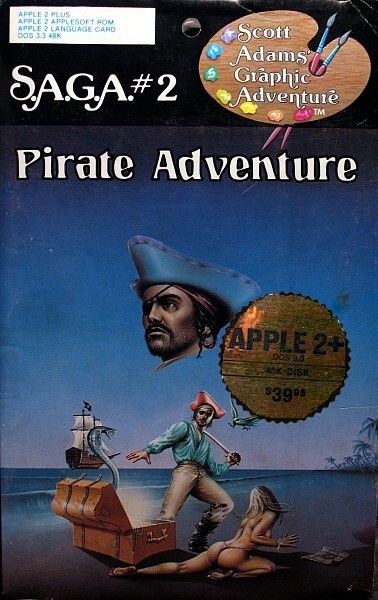
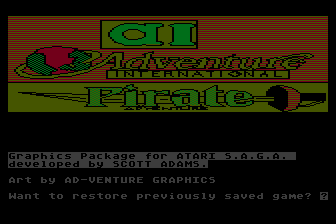
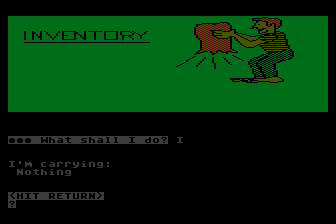
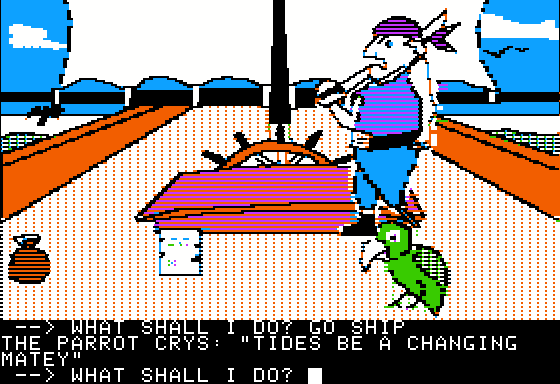
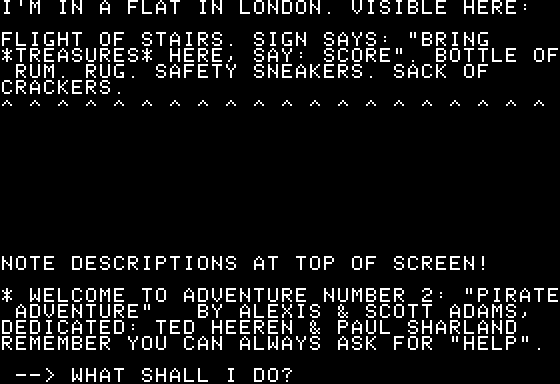
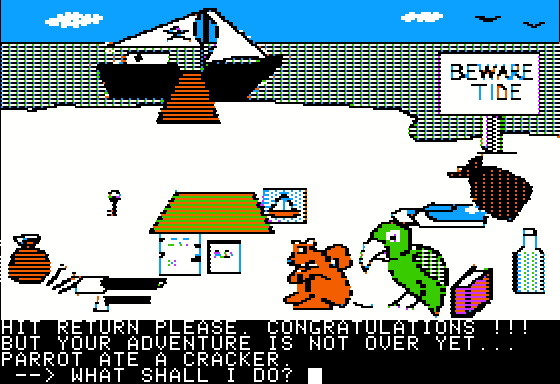



Reviews
There are no reviews yet.